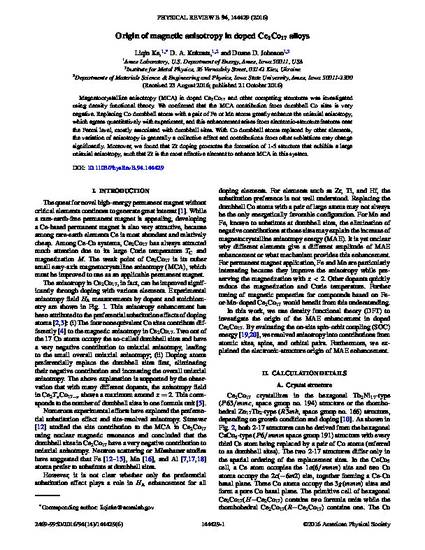
Article
Origin of magnetic anisotropy in doped Ce2Co17 alloys
Physical Review B
Document Type
Article
Disciplines
Publication Version
Published Version
Publication Date
10-1-2016
DOI
10.1103/PhysRevB.94.144429
Abstract
Magnetocrystalline anisotropy (MCA) in doped Ce2Co17 and other competing structures was investigated using density functional theory. We confirmed that the MCA contribution from dumbbell Co sites is very negative. Replacing Co dumbbell atoms with a pair of Fe or Mn atoms greatly enhance the uniaxial anisotropy, which agrees quantitatively with experiment, and this enhancement arises from electronic-structure features near the Fermi level, mostly associated with dumbbell sites. With Co dumbbell atoms replaced by other elements, the variation of anisotropy is generally a collective effect and contributions from other sublattices may change significantly. Moreover, we found that Zr doping promotes the formation of 1-5 structure that exhibits a large uniaxial anisotropy, such that Zr is the most effective element to enhance MCA in this system.
Copyright Owner
American Physical Society
Copyright Date
2016
Language
en
File Format
application/pdf
Citation Information
Liqin Ke, D. A. Kukusta and Duane D. Johnson. "Origin of magnetic anisotropy in doped Ce2Co17 alloys" Physical Review B Vol. 94 Iss. 14 (2016) p. 144429 Available at: http://works.bepress.com/duane_johnson/108/

This article is from Physical Review B 94 (2016): 144429, doi:10.1103/PhysRevB.94.144429. Posted with permission.